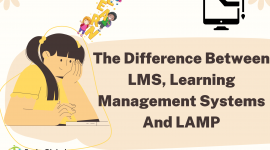Auditory learning is a style of learning where individuals primarily absorb and process information best through listening and hearing. Unlike visual or kinesthetic learners, auditory learners excel at understanding and retaining information that is presented to them orally. This can include lectures, discussions, audio recordings, and other verbal forms of information delivery.
Characteristics of Auditory Learners

Auditory learners often exhibit the following characteristics:
- They tend to learn best by listening to information rather than reading it.
- They may struggle with written instructions and prefer to have information explained verbally.
- They often enjoy discussing topics out loud and hearing themselves speak.
- They may find it helpful to record lectures or discussions and listen to the recordings later.
- They often have strong listening skills and can remember spoken information well.
- They may read aloud or talk to themselves when studying or working through a problem.
Benefits of Auditory Learning

Auditory learning offers several benefits for those who prefer this style:
Improved Retention
Auditory learners often find that they can recall information better when they have heard it spoken aloud, compared to reading the same material. The act of listening and hearing the information can help cement it in their memory.
Enhanced Comprehension
By listening actively, auditory learners can pick up on vocal cues, inflections, and subtle nuances that may provide additional context and aid in their understanding of the material.
Versatile Application
Auditory learning techniques can be applied in a variety of settings, from traditional classroom lectures to online courses, podcasts, and even informal conversations. This flexibility allows auditory learners to take advantage of their preferred learning style in many different contexts.
Strategies for Auditory Learners

To optimize the auditory learning experience, individuals with this preference can employ the following strategies:
- Attend Lectures and Discussions: Seek out opportunities to learn through verbal instruction, such as attending in-person or virtual lectures, participating in group discussions, and engaging in one-on-one conversations with instructors or subject matter experts.
- Use Recording Devices: Record lectures, podcasts, or audio books, and listen to the recordings repeatedly to reinforce the information.
- Engage in Verbal Repetition: Read materials aloud, discuss concepts with others, or create verbal summaries to help cement your understanding.
- Experiment with Music or Background Noise: Some auditory learners find that listening to music or background noise can help them focus and retain information better, while others prefer a quiet environment. Experiment to find what works best for you.
- Seek Opportunities for Verbal Feedback: Ask questions, participate in discussions, and request verbal feedback from instructors or peers to ensure you are grasping the material effectively.
By understanding and embracing their auditory learning preferences, individuals can develop strategies to optimize their learning experiences and achieve greater academic and professional success.
Challenges Faced by Auditory Learners

Difficulty with Written Instructions
Auditory learners often struggle when instructions or information are presented in written form, such as manuals, textbooks, or written assignments. They find it easier to understand verbal explanations or discussions rather than reading on their own. This can lead to misunderstandings or missed details in tasks requiring reading comprehension.
Struggles with Visual and Kinesthetic Tasks
Since auditory learners rely heavily on listening, they may face challenges with tasks that require strong visual or hands-on skills, such as interpreting charts, graphs, or diagrams. Subjects like math or science, which often involve visual representations, can be particularly difficult, as auditory learners may not connect as well with non-verbal content.
Easily Distracted by Background Noise
Auditory learners are highly sensitive to sounds, making them prone to distraction in noisy environments. Background noise, such as chatter, music, or environmental sounds, can disrupt their concentration and make it hard to focus on verbal instructions. This challenge can significantly impact their ability to learn effectively in busy or loud settings, like crowded classrooms.
Over-Reliance on Verbal Learning
Auditory learners may become overly dependent on verbal cues and explanations, which can hinder their ability to engage with other learning methods. This reliance can limit their academic development, especially in areas where verbal instruction is not the primary teaching method. They may also struggle to independently learn from written or visual sources.
Challenges in Organizing Written Work
Because auditory learners excel in verbal communication, they often find it difficult to organize their thoughts in writing. Structuring essays, reports, or written assignments can be challenging, as their natural inclination is to express ideas verbally. This can lead to poorly organized or incomplete written work, affecting their overall academic performance.
Conclusion
Auditory learning is a powerful style that benefits those who process information best through sound and speech. By embracing their auditory learning preferences, individuals can enhance their educational experience, improve retention, and achieve success in both academic and professional settings.
Educators can further support these learners by incorporating verbal and auditory-focused teaching strategies, creating a more inclusive learning environment that caters to diverse learning styles.









